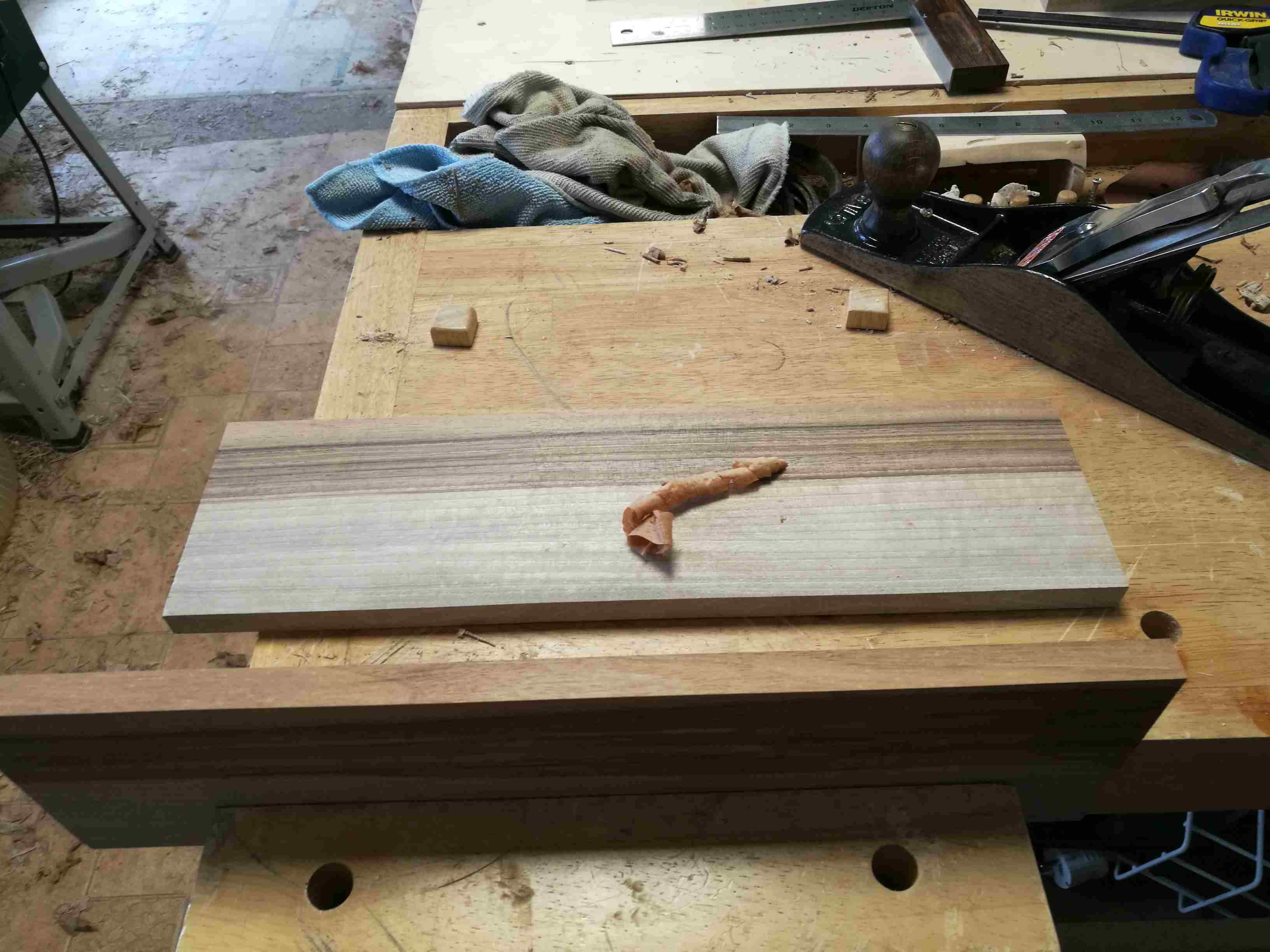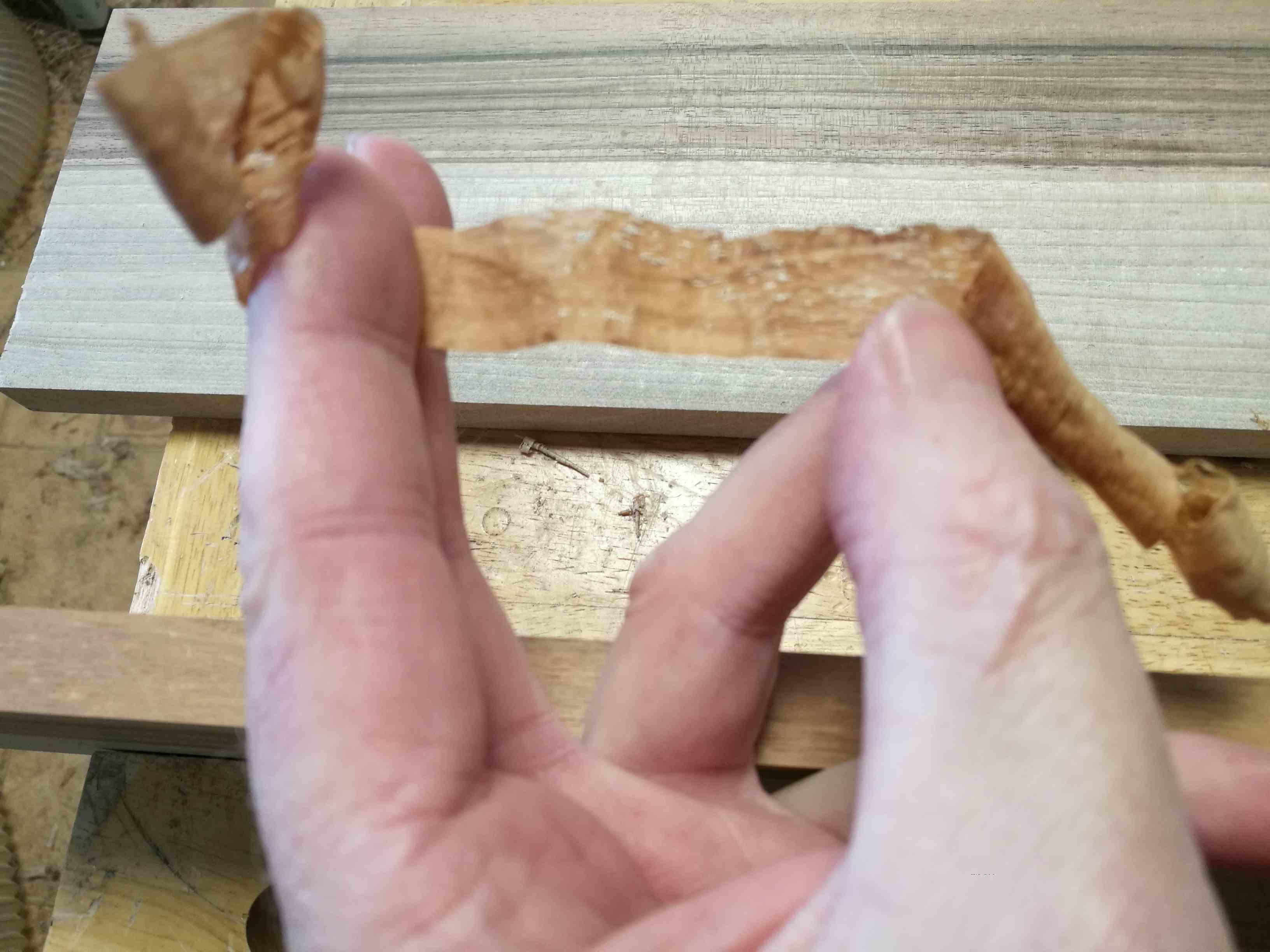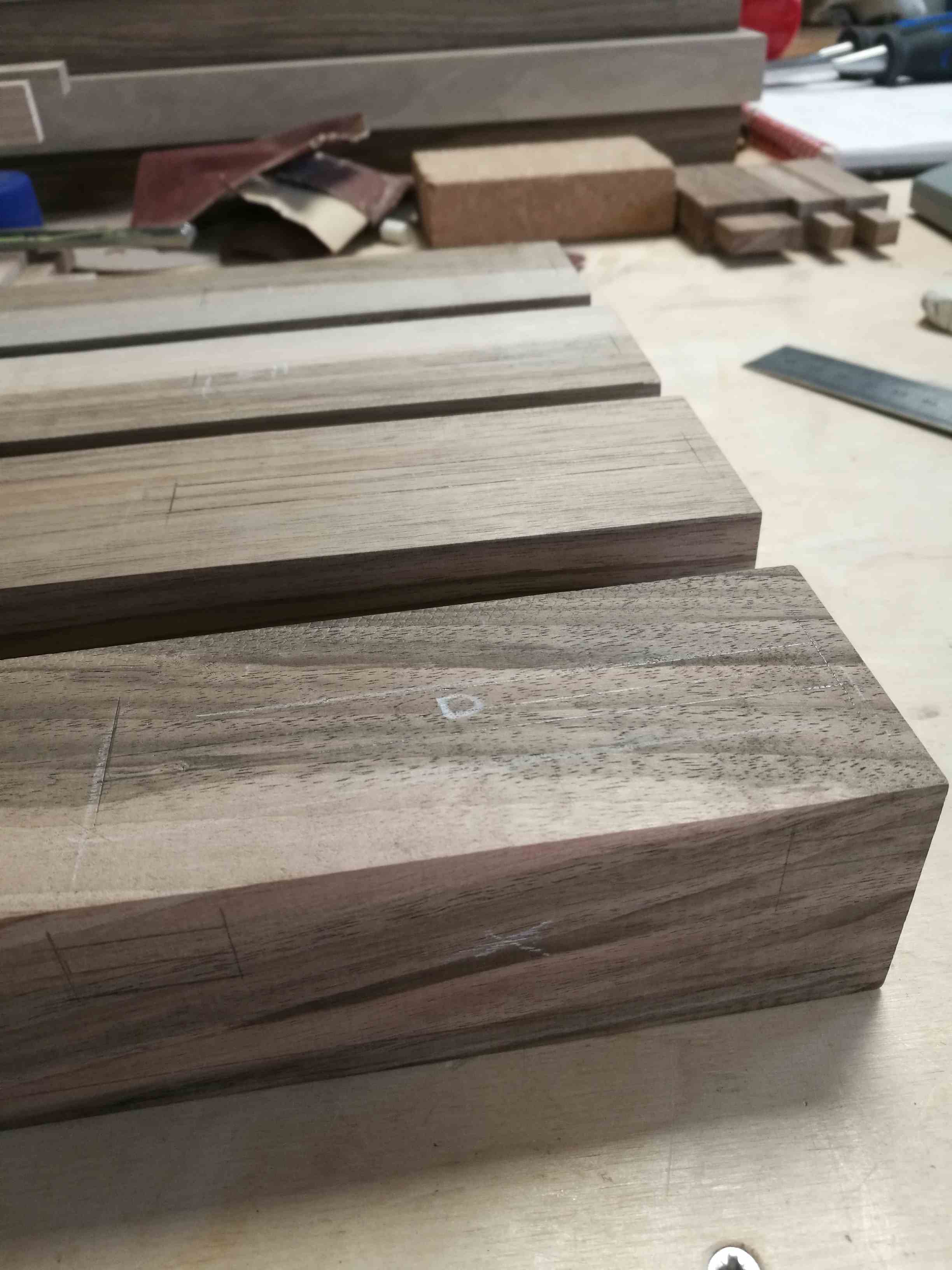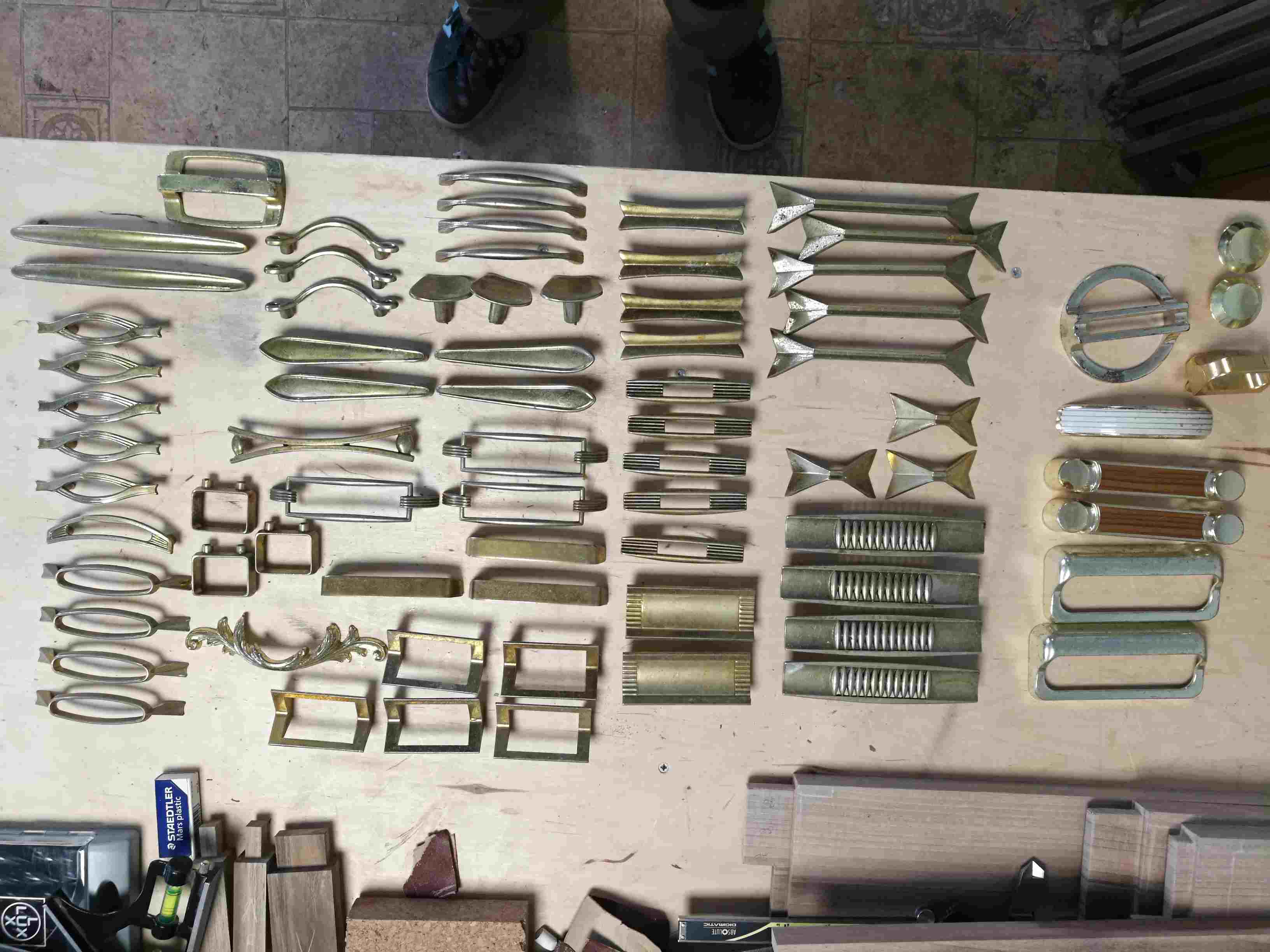This is my first attempt at a project of this size and also, my first attempt at a build post so, advice or suggestions on how to do either better are welcome.
A friend gave me an entire trunk of Walnut which had been sliced into 50mm boards and dried in a barn for 5 years. In return for the wood he asked me to make a coffee table for his father in law despite knowing that I had never made anything like that before! Time wasn't crucial for him so, for the last 6 months, when I had time, I have been practicing the joints I will use for this project. Now, I'm ready, probably.
I wanted to keep the design fairly simple to avoid my ambition exceeding my skills but I had to make some changes right from the start due to the quality of the wood I had to work with. The boards I have all have a lot of twisting and some cupping and getting straight bits out of them was a very wasteful process. Initially, it was going to have a lower shelf but I decided to put drawers instead to reduce the amount of wood I would need to use. Here's what I'm going for.

I picked the 2 straightest boards from the pile.


Cut them to rough dimensions
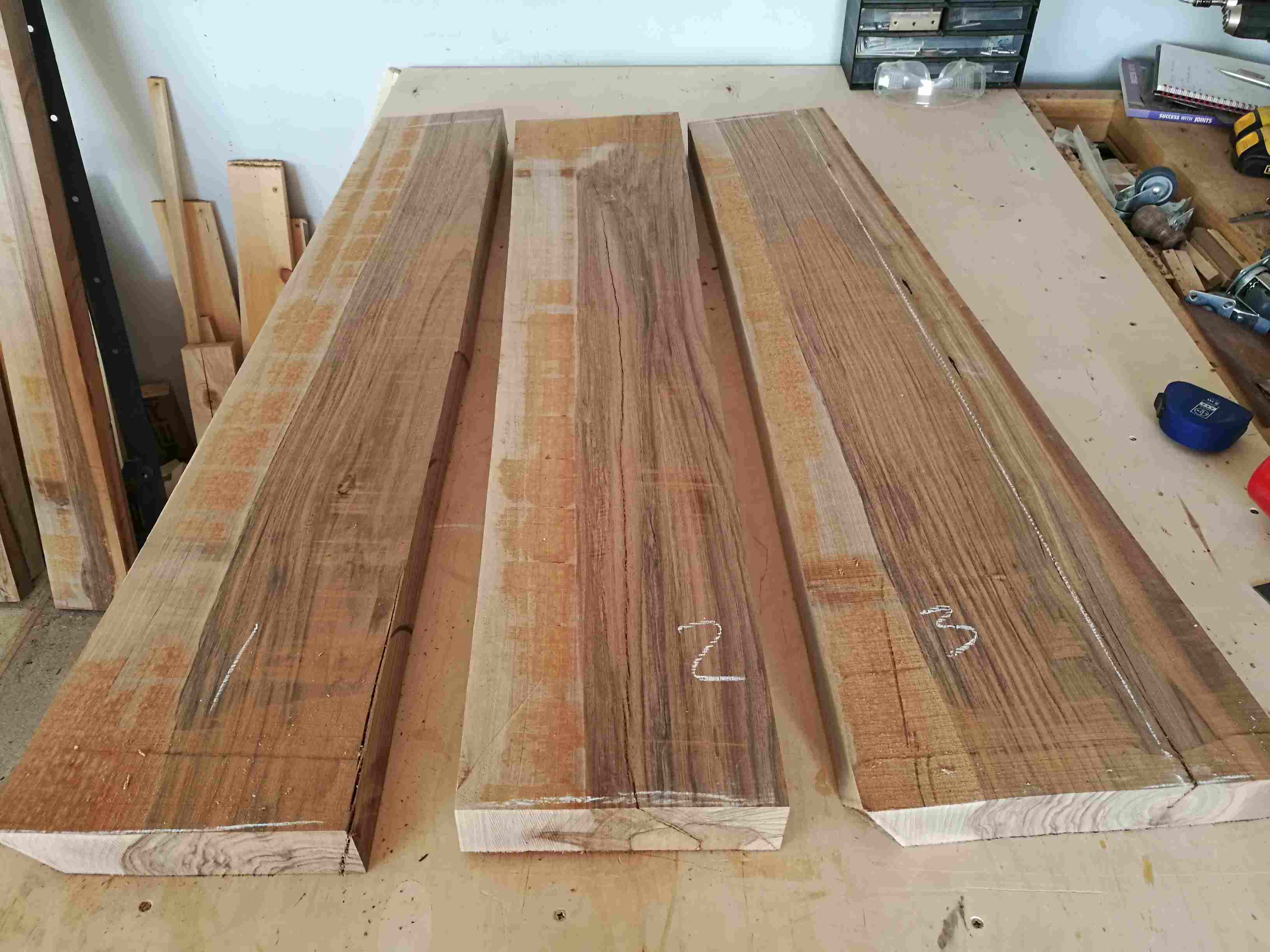
The first board is OK but the second one has a split right through and the third needs the pith cutting out. So, I chop up another board and finally, I ve got enough for the table top! This is where the design changes happen as I start to worry that this table will use all of the wood I was given (I'd envisiged using less than half of the 7 boards for the whole table).

All of the walnut furniture I've seen has only ever used the dark brown part of the wood but if I did that then I definitely wouldn't have enough wood and the table would be made of laminated battons no more than 100mm wide. I like the colour variation even though the lighter part is prone to a bit of tear out and hopefully, no one is going to ruin my day by telling my I'm doing something foolish.
I'm holding off gluing the top together as I want to put some dowels in to help keep it flat and I'm waiting for some dowel pins to arrive that I've ordered.
Next job is the legs.
I wanted to make the legs 50mm x 50mm but, as my stock is 50mm thick and a bit wonky, that would mean gluing bits together. The best thickness I could get was 43mm so the choice was stick with that or make it up to 50mm by adding to the thickness and I decided to go with 43mm.
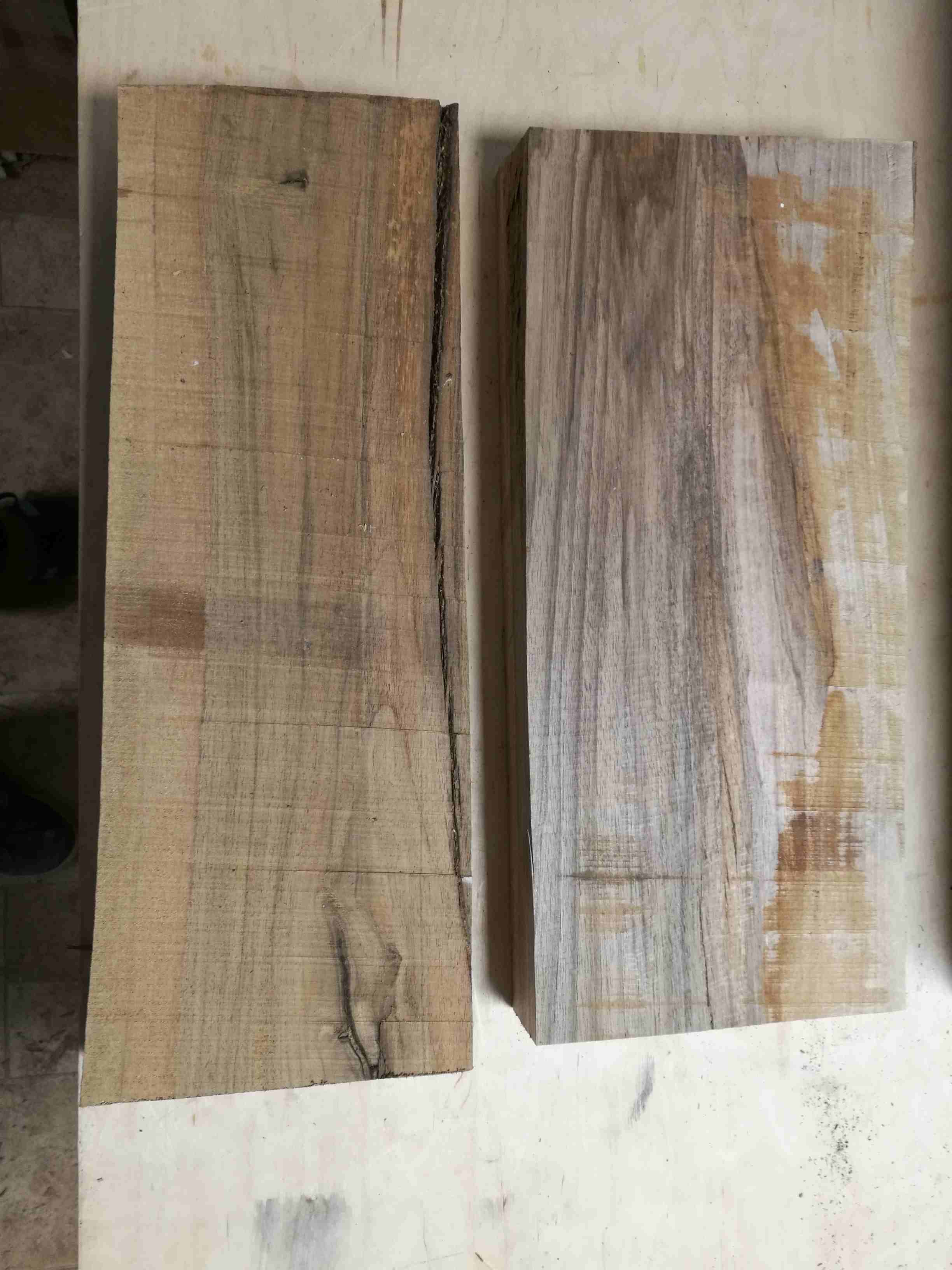

I'm a bit further ahead than this but I'll post more tomorrow.
A friend gave me an entire trunk of Walnut which had been sliced into 50mm boards and dried in a barn for 5 years. In return for the wood he asked me to make a coffee table for his father in law despite knowing that I had never made anything like that before! Time wasn't crucial for him so, for the last 6 months, when I had time, I have been practicing the joints I will use for this project. Now, I'm ready, probably.
I wanted to keep the design fairly simple to avoid my ambition exceeding my skills but I had to make some changes right from the start due to the quality of the wood I had to work with. The boards I have all have a lot of twisting and some cupping and getting straight bits out of them was a very wasteful process. Initially, it was going to have a lower shelf but I decided to put drawers instead to reduce the amount of wood I would need to use. Here's what I'm going for.

I picked the 2 straightest boards from the pile.


Cut them to rough dimensions

The first board is OK but the second one has a split right through and the third needs the pith cutting out. So, I chop up another board and finally, I ve got enough for the table top! This is where the design changes happen as I start to worry that this table will use all of the wood I was given (I'd envisiged using less than half of the 7 boards for the whole table).

All of the walnut furniture I've seen has only ever used the dark brown part of the wood but if I did that then I definitely wouldn't have enough wood and the table would be made of laminated battons no more than 100mm wide. I like the colour variation even though the lighter part is prone to a bit of tear out and hopefully, no one is going to ruin my day by telling my I'm doing something foolish.
I'm holding off gluing the top together as I want to put some dowels in to help keep it flat and I'm waiting for some dowel pins to arrive that I've ordered.
Next job is the legs.
I wanted to make the legs 50mm x 50mm but, as my stock is 50mm thick and a bit wonky, that would mean gluing bits together. The best thickness I could get was 43mm so the choice was stick with that or make it up to 50mm by adding to the thickness and I decided to go with 43mm.


I'm a bit further ahead than this but I'll post more tomorrow.
















































